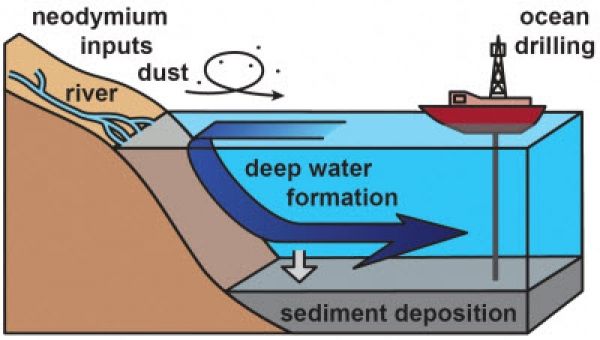The scientists, led by Dr Sietske Batenburg at the University of Oxford’s Department of Earth Sciences, in close collaboration with German and UK institutions, made this discovery when they compared neodymium isotope signatures of deep sea sediment samples from both regions of the Atlantic. Their paper – ‘Major intensification of Atlantic overturning circulation at the onset of Paleogene greenhouse warmth’ – published today in Nature Communications, reveals that the more vigorous circulation together with an increase in atmospheric CO2 led to a climatic tipping point. With a resulting more even distribution of heat over the earth, a long-term cooling phase ended and the world headed into a new greenhouse period.
Neodymium (Nd) isotopes are used as a tracer of water masses and their mixing. Surface waters acquire a Nd-isotope signature from surrounding land masses through rivers and wind-blown dust. When surface waters sink to form a deep-water mass, they carry their specific Nd-isotope signature with them. As a deep-water mass flows through the ocean and mixes with other water masses, its Nd-isotope signature is incorporated into sediments. Deep sea sediments are valuable archives of ocean circulation and past climates.
Continue reading at University of Oxford
Image via University of Oxford


